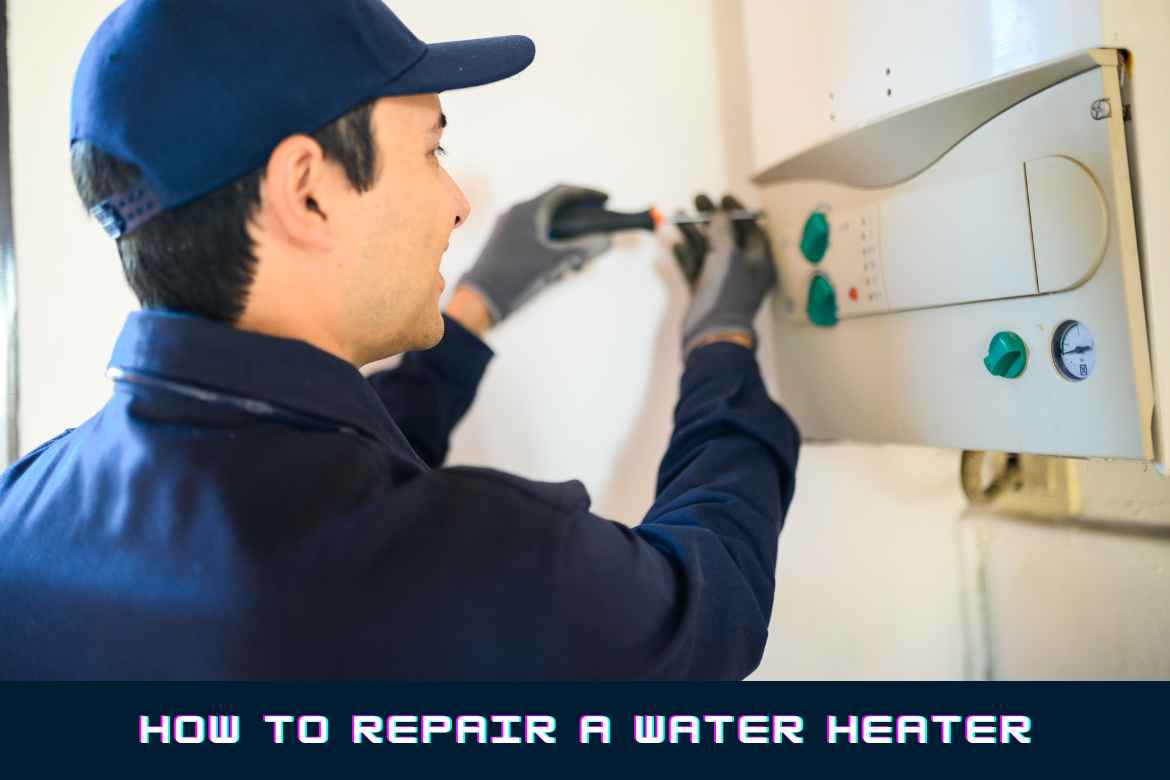Imagine stepping into your shower on a chilly winter morning, only to have an icy blast of water greet you. It’s a scenario most of us would rather avoid, for sure. That’s where your trusty water heater comes to the rescue. That’s why a functioning water heater isn’t just a convenience; it’s a modern-day necessity.
Also, did you know that according to Forbes, the average household uses about 64 gallons of hot water every day for various tasks like bathing, washing dishes, and doing laundry? Imagine your daily routine without hot water. Not so appealing, is it?
While water heaters are built to last, occasional repairs are as inevitable as the changing seasons. From minor thermostat tweaks to more complex fixes, understanding how water heater repair works can save you not only money but also the inconvenience of a sudden, bone-chilling shower. So, join us on this journey as we explore the ins and outs of repairing your water heater and ensuring your daily hot water supply remains uninterrupted.
Table of Contents
ToggleSafety Precautions
1. The Importance of Safety
2. Significance of Turning Off the Power and Water Supply
Before you roll up your sleeves to repair a water heater, the first golden rule is to ensure the power and water supply are completely shut off. Trust us, you don’t want any surprises during this process.
For electric water heaters, locate the circuit breaker in your electrical panel and switch it off. For gas water heaters, however, turn the gas supply valve to the “off” position. As an extra precaution, you can also turn off the water supply to the heater.
Identifying the Problem
1. How to Recognise Common Water Heater Issues
So, you step into the shower expecting a blissful cascade of warm water, but all you get is the icy chill of disappointment. Sound familiar? This is a common predicament, and it’s just one of the issues that might plague your water heater. Here are some other common problems to be on the lookout for:
- No Hot Water: This could be due to a malfunctioning thermostat, a faulty heating element, or gas supply issues too (for gas heaters).
- Leaks: Puddles or drips around the base of the heater may indicate a leak in the tank or a faulty pressure relief valve.
- Strange Noises: If your water heater is making unusual sounds like popping and cracking, it could be due to sediment buildup or a failing heating element.
- Rusty Water: Brown or rusty-coloured water coming from your taps can be a sign of corrosion inside the tank.
2. Perform a Visual Inspection
3. Understanding the Type of Water Heater
Tools and Materials
Now that you’ve identified the issues with your water heater, it’s time to gather the tools and materials you’ll need for a successful repair. Having the right equipment at your fingertips can make the process smoother and more efficient.
In your toolkit for water heater repair, you’ll find a range of essential items, each serving a distinct purpose. The adjustable wrench is your go-to for securing or loosening nuts and bolts of various sizes, while screwdrivers are indispensable for removing panels and covers to access internal components.
The pipe wrench is designed specifically for gripping and turning pipes and fittings, making it an essential companion for plumbing work. For diagnosing electrical issues, the multi-metre steps in, measuring voltage, resistance, and current with precision. To ensure clean, precise cuts when dealing with pipes, you’ll rely on the tubing cutter.
Pipe joint compound and pipe tape come into play to provide watertight seals on threaded connections, preventing bothersome leaks. Replacement parts, like thermostats, heating elements, or valves, are crucial for addressing specific water heater issues.
And don’t forget your trusty bucket and towels; they’re essential for containing any water or spills that may occur during the repair process. Lastly, a reliable flashlight offers much-needed visibility when working in tight and dark spaces. With these tools at your disposal, you’re well-equipped to take on your water heater repair project.
Troubleshooting and Diagnosis
It’s time to dive into the heart of the matter, which is troubleshooting and diagnosis. This is where you become a detective, unravelling the mystery of your malfunctioning water heater. Here’s how to approach it.
With your safety gear on and your toolkit at the ready, let’s delve into the crucial phase of troubleshooting and diagnosis when it comes to repairing your water heater. This is the part where you put on your detective hat and work through the puzzle of what’s ailing your trusty water heater. Here’s a step-by-step guide on how to do it.
1. No Hot Water
When you turn on the tap and all you get is a stream of cold water, it’s time to investigate further. For gas water heaters, check if the pilot light is lit. If it’s out, consult your water heater’s manual to follow the manufacturer’s instructions on relighting it. If the pilot light keeps going out, it could be a sign of a faulty thermocouple.
For electric water heaters, inspect the circuit breaker to ensure it hasn’t tripped. If it has, reset it. If the breaker keeps tripping, it’s possible there’s a problem with the heating elements or thermostat.
2. Leaks
3. Strange Noises
4. Inconsistent Hot Water
5. Rusty Water
Water Heater Maintenance
1. Regular Maintenance
2. Maintenance Tips
Maintaining your water heater is akin to giving it the TLC it needs to perform at its best and have a long, trouble-free life. Here are some essential maintenance tips that every water heater owner should know:
- Flushing the Tank: Over time, sediment can build up inside your water heater tank, which can reduce its efficiency and potentially lead to damage. To combat this, it’s recommended to drain and flush the tank on an annual basis. To do it, start by turning off the power supply and water inlet to the water heater. Then, connect a hose to the drain valve located at the base of the tank. To allow air into the tank and facilitate draining, open a hot water tap in your home. Next, open the drain valve and let the water flow out. Repeat this process until the water runs clear, indicating that most of the sediment has been flushed out. Finally, close the drain valve, turn on the water supply, and restore power to the water heater.
- Checking the Anode Rod: The sacrificial anode rod inside your water heater plays a crucial role in preventing tank corrosion. Over time, this rod can become corroded or worn down. It’s a good practice to inspect it annually and replace it if it shows significant corrosion or wear. Replacing the anode rod can significantly extend the life of your water heater and protect it from premature corrosion.
- Temperature Adjustment: Check the temperature setting on your water heater’s thermostat. The recommended temperature setting is typically around 120°F (49°C). This temperature not only prevents the risk of scalding but also helps save energy. Adjust the thermostat as needed to maintain the ideal temperature.
- Pressure Relief Valve Test: Annually, it’s essential to test the pressure relief valve. Simply lift the valve’s lever slightly to release some water. This test ensures that the valve is functioning correctly. If the valve doesn’t release water or if it’s leaking, it may need replacement. A malfunctioning pressure relief valve can be a safety hazard, so don’t overlook this step.
By following these maintenance tips, you’ll not only keep your water heater in excellent working condition but also extend its lifespan. Remember, routine maintenance can save you from the hassle of unexpected breakdowns and expensive repairs. And if you ever find yourself wondering who to call for water heater repair, consider reaching out to a professional plumber who can provide expert assistance when needed.
Final Words
When it comes to the world of household appliances, your water heater quietly goes about its business, ensuring your daily comfort. Yet, when it falters, it becomes all too apparent. With the insights shared in this guide, you’ve learned how to diagnose, troubleshoot, and even perform basic repairs.
Remember, regular maintenance is the secret to a long and trouble-free life for your water heater. By giving it the attention it deserves and seeking professional help when needed, you’ll keep the hot water flowing and ensure your home remains a warm and comfortable oasis.

